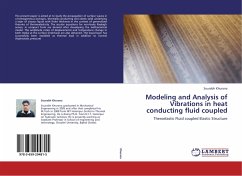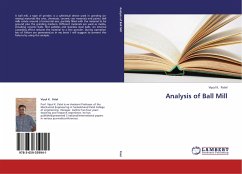Gears are most common means of transmitting power in the modern world. Gears are used to change the speed and power ratio as well as direction between an input and output shaft. The constant pressure to build less expensive, quieter running, light weight, and more powerful machinery has resulted in a steady improvement of gear designs. At present much is known about gear load carrying capacity and many complicated processes are available to make gears. In the present study a spur gear is investigated using a two dimensional finite element model. The two dimensional model offers significant advantages for dynamic gear analysis. The gear teeth are analysed for different operating speeds. The finite element analysis software ANSYS12 APDL has been used on the model to find the stresses, strains and displacements.
Bitte wählen Sie Ihr Anliegen aus.
Rechnungen
Retourenschein anfordern
Bestellstatus
Storno








